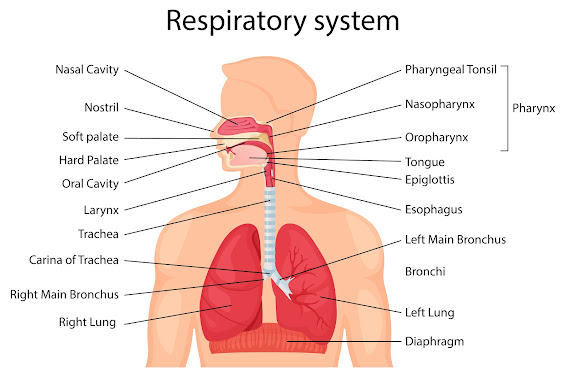Human Respiratory System
Did you know that the average person breathes 23,300 times every day? That is about 12-20 breaths every minute! In this article, I am going to explain the fascinating way the respiratory system works.
What is the respiratory system?
Well, the respiratory system is made up of eight organs: the nose, mouth, pharynx, larynx, trachea, bronchia, lungs, and the diaphragm. Each of these organs has a vital role in allowing humans to breathe. Without taking in fresh oxygen, you would have excessive carbon dioxide and your organs would begin to shut down. You would be dead within about three minutes!
How do we breathe?
First air enters through the nose or mouth. The air now travels down the trachea, which is like a straw - movable but somewhat rigid to keep your airway open. The trachea leads to the lungs. After the lungs taken in oxygen the lungs contract, and the carbon dioxide is released from the body in an exhale.
What happens in the lungs?
When we inhale, our lungs take in oxygen from the air. The oxygen is then carried to the bloodstream. The bloodstream delivers the oxygen to all the cells in our body. Cells need oxygen to function. At the same time as fresh oxygen is added, the lungs remove carbon dioxide, a waste product that we exhale. The lungs are made up of a network of airways and tiny air sacs called alveoli, where the exchange of oxygen and carbon dioxide takes place.
How to keep the lungs healthy!
- A balanced diet rich in fruits, vegetables, and whole grains can help support lung health.
- Drinking plenty of water helps keep your lungs hydrated and functioning properly.
- Regular exercise can help improve lung function and capacity. Aim for at least 30 minutes of physical activity each day.
- Deep breathing exercises can help improve lung function and reduce stress. Take a few deep breaths throughout the day to keep your lungs strong.
- Sitting up straight and maintaining good posture can help improve lung function by allowing your lungs to fully expand.
- Smoking damages your lungs and puts you at higher risk for respiratory diseases. If you smoke, quitting is the best thing you can do for your lung health.
- Try to limit your exposure to air pollution by staying indoors on high pollution days and using air filters in your home.
- Avoid exposure to secondhand smoke, chemical fumes, and other respiratory irritants that can harm your lungs.

Comments
Post a Comment